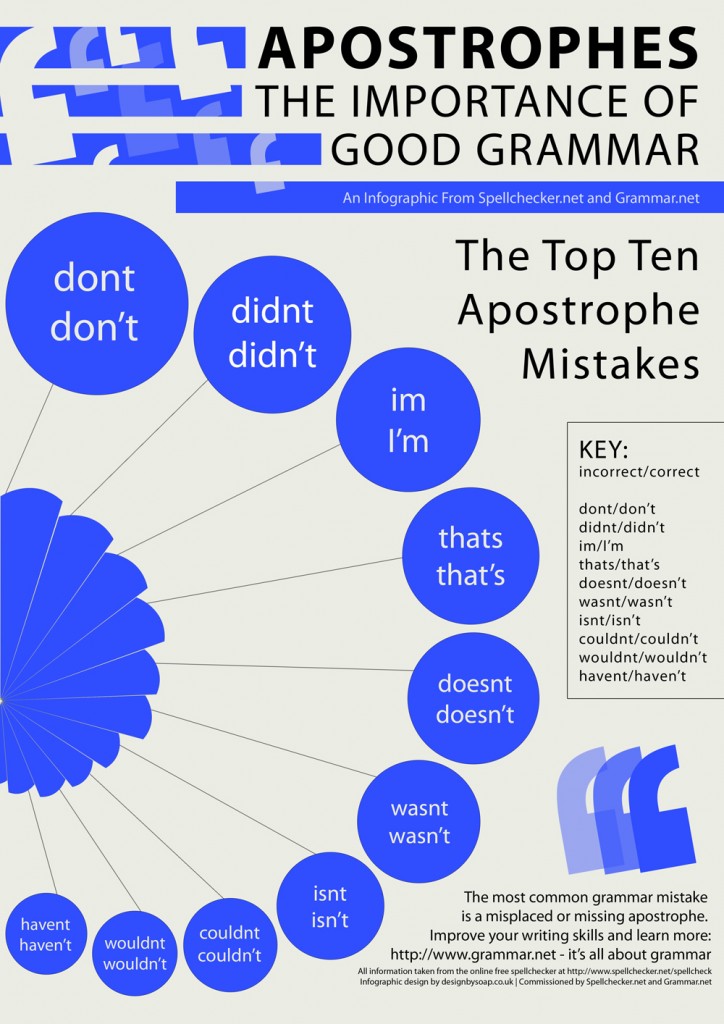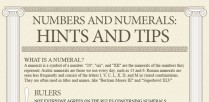Good morning, afternoon, evening!
My dear students, some of you asked me to add more praxis in our studying process. So today I’d like to introduce you new (or already known for some of us) method of learning with pictures, schemes, and infographics.
Below you can see the infographic explaining the use of Apostrophes. This is an excellent example of the correct and incorrect writings.
Sometimes not only the wrong apostrophe looks stupid, but it can give a different meaning to a word.
Learning these apostrophe rules will help you know when to use apostrophes.
 You can download full-size infographic poster here.
You can download full-size infographic poster here.
1. We use apostrophes in contractions, the shortened form of two words.
As it is shown in the infographic, an apostrophe is inserted for the missing letters. For instance, “she is” = “she’s”; “do not” = “don’t”; and “I am” = “I’m.”
Without the apostrophe, the word isn’t a contraction, and most likely it’s not a word at all. “It’s” would be an exception. Without an apostrophe, “its” is a possessive pronoun; with an apostrophe, “it’s “= “it is/it has.”
Here are some examples without meaning in case of mistake:
- let’s (let us)
- could’ve (could have)
- He’s (He has, or he is)
But here are the cases when some of the words would have another meaning:
- He’ll (he will) or “hell” which is not a positive word.
- We’ll (we will) or “well” to say that something is good or satisfactory.
- I’ll (I will) or “ill” to mean in poor health.
2. Expressing Possession is another component of the apostrophe’s job description.
The “s” indicates the work of possessive apostrophes; the job description “belongs” to the apostrophe. Note also that the word apostrophe is singular.
The possessive form of singular nouns is usually made by adding an apostrophe and “s.” Take a look at these apostrophes examples:
- child’s toy
- student’s laptop
- fish’s pond
When a singular noun ends with an ‘s’ or ‘z’ sound, it is permissible to use apostrophes after “s” alone. However, if the word is only one syllable, an apostrophe, and “s” should always be used:
- Texas’ cattle ranches
- Texas’s cattle ranches
- dress’s buttons
To avoid confusion when forming the plural possessive of a word, write the plural first. Then add the apostrophe after “s.” However, if the plural doesn’t end with “s”, add an apostrophe and “s.” Consider the way these possessive apostrophes are marked:
- the Millers’ home
- these dresses’ buttons
- children’s games
- women’s clothing
- my both sisters’ birthday
Apostrophes are no longer necessary when forming the plurals of letters and numerals unless there’s a doubt of the meaning without an apostrophe. See the apostrophes examples below for clarification:
- She received As and Bs on her recent grade report.
- The restaurant scored 8s for service and food quality.
- The 1950s were happy years for some people.
- “Dot your is and cross your ts” is unclear: use apostrophes instead and change to “Dot your i’s and cross your t’s.”
Please, look through these grammar rules carefully, as tomorrow we’ll have a lot of practice, and exercises.







